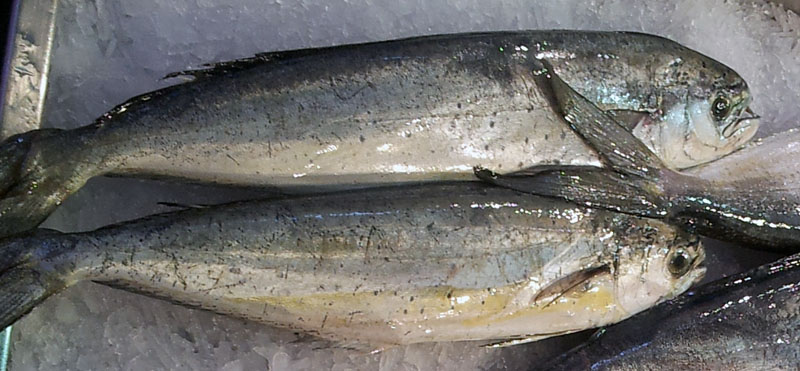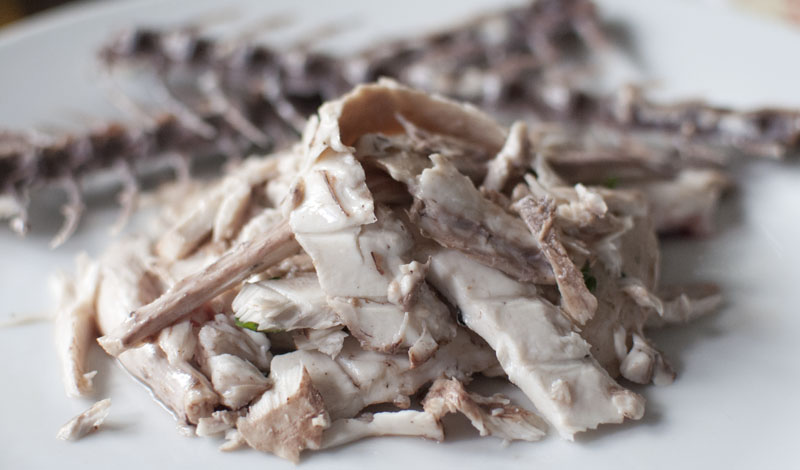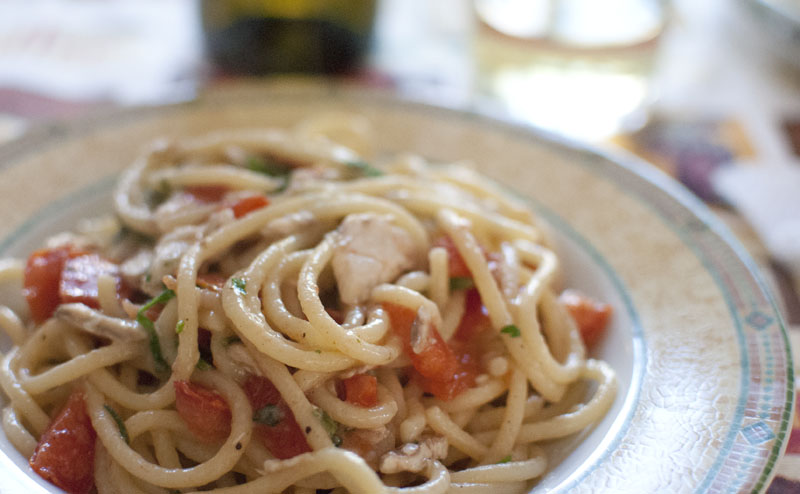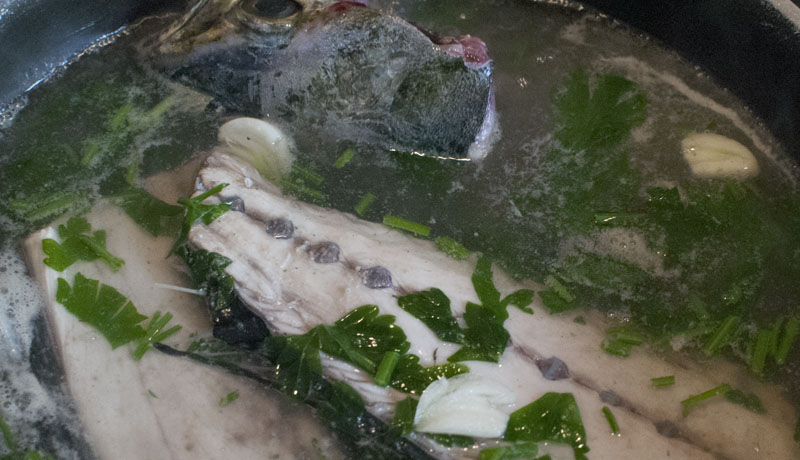Read this post in / Anche disponibile in: Italian
Not for the first time, and not for the last either, I’ll warrant, we come up against the problem of names. This time in both English and Italian, just to make things fair. In English, these creatures that look like they’ve swum into a wall nose-first are called dolphinfish or mahi-mahi (which of course is not English, but Hawaiian, for the record). I don’t know why, and as you can see, they’re not likely to get confused with dolphins by anybody but the extremely visually challenged. In Italian they’re lampuga, but in Sicily they’re caponi (capuni in local dialect). And just when you thought things were complicated enough, you learn that in the rest of Italy, capone is another name for gallinella, i.e. gurnard. In other words, a completely different fish. Sufficiently confused? Join the club. I’d suggest drinking a zesty dry white with this, maybe a Sicilian grecanico. I know I usually leave wine pairing suggestions until after the recipe, but the stress of trying to work out what your main ingredient is actually called means a quick glass of something is probably in order.
I’d suggest drinking a zesty dry white with this, maybe a Sicilian grecanico. I know I usually leave wine pairing suggestions until after the recipe, but the stress of trying to work out what your main ingredient is actually called means a quick glass of something is probably in order.
Like many other things here, this fish is stretched into two meals, or at least into two dishes. The fillets will be grilled, breadcrumbed and fried, or maybe baked with tomatoes, capers and white wine, but the leftovers are a meal in the making themselves. “Ti lascio le spine? Ci fai due fili di pasta?”, the fishmonger asked me as he filleted them – ‘do you want the bones for some pasta?’.
And this for me is almost the whole point, and definitely more interesting than anything you can do with the fillets. The procedure works equally well with any long, ribbon-shaped fish (here in Sicily, spatola/scabbard fish and aguglia/garfish come to mind, but it would work with practically any fish that when filleted leaves a fair bit of flesh on the bone).
Serves 4
- leftovers (head and spine) of 1.3 kg capone
- two tomatoes, deseeded and diced
- small bunch of parsley, chopped
- 2 cloves of garlic
- 1 tablespoon of extra virgin olive oil
- sea salt, frehly ground black pepper
- 400 g spaghetti
1. Place the capone bones and head in a pan with enough water to barely cover them, together with half the chopped parsley, a good pinch of salt and two squashed cloves of garlic (if you want a stronger garlic flavour, slice or chop the garlic and gently sweat in some olive oil before adding the fish and water). Cook, covered, over a medium heat for ten minutes.
2. Remove the fish with a slotted spoon, and when it’s cool enough to handle, remove all the fish from the bones and break up into flakes. In the meantime, continue to cook the fish broth until it reduces by half. Now is also the time to start cooking the pasta. 3. When the pasta is almost done, say a minute before the time specified on the packet, drain and return to the pan. Pour over the reduced fish broth and stir in the fish, the tomatoes, and the remaining parsley. Cook for another minute or so until the pasta is al dente.
3. When the pasta is almost done, say a minute before the time specified on the packet, drain and return to the pan. Pour over the reduced fish broth and stir in the fish, the tomatoes, and the remaining parsley. Cook for another minute or so until the pasta is al dente.
4. Serve, and drizzle some olive oil over each dish. A final twist of black pepper and it’s ready. 

 English
English Italiano
Italiano